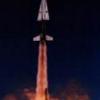Hello there. I am having an interesting problem that has been developing in my brand new Toshiba Satellite over the last few months. I'll give a brief description of the problems and then give specs and tell you what I've tried so far.
The problem began after the computer woke up from sleep. The touchpad failed to work. No driver errors in Windows Device Manager. I uninstalled and reinstalled several times anyway. No improvements. After many restarts, the touchpad worked again seemingly without cause for change. Then, within weeks, the s key started working only intermittently, and then slowly the whole bus seemed to go out (keys 2wsx), but what was odd is that they would still work intermittently, sometimes for weeks without problem. The keys' fiunction was not improved in safe mode. I tried a system restore and it would freeze and hang without success. I got extremely busy with school (I'm a physics major) and let it go for a while. The keys did not seem sticky or in any way different or damaged. Pressing the keys for 30 seconds would often cause them to work, without any added pressure. Yet sometimes, it would not. This all could have been totally unrelated, but I want to include anything pertinent.
Then I admittedly did something stupid and I shook the computer while it was on and upside down to see if some crumbs might fall out of the keyboard. When I grabbed this very structurally poor Satellite on the right of the touchpad and turned it upside down, it made a horrible screeching sound and I let go right away. I didn't realize it but this is right above the HDD. I put the computer down and the touchpad was now frozen, but the keys worked. I was able to save my work in Word and shut down the computer.
Upon restart, the computer went into a Toshiba diagnostic loop that begin with the windows 8 "oops something is wrong.." blue screen, then went to Toshiba Starting Automatic repair, a Toshiba "repairing disk errors. this may take several hours" screen and a Toshiba "diagnosing problems" screen, which would each hang for an hour on a black screen and then the computer would restart and start the whole cycle over.
I entered the BIOS and changed settings back to defaults. No improvements. I changed the boot order and tried to boot from CD. The same startup repair loop would happen and fail to boot from CD. The only way to move forward was to select "HDD recovery" from the BIOS. Then a black screen appears and hangs for an hour, and then finally the Windows 8 Recovery environment becomes available. This happens reliably.
From here I was able to get a Linux Live CD to load once and was able to browse through my entire file system on the affected C drive with Midnight Commander. The files all appeared to be in the proper order. I'm new to Linux and got stuck, restarted and couldn't get it to boot from CD since.Windows into command prompt takes 1 hour to enter the recovery environment and open command prompt. From command prompt I ran chkdsk C: and it detects 200,000 or so files, 9,000 or so large files without any problems, then proceeds to indexes but gets stuck on USN journal with this message: a disk read error occurredc0000185 insufficient disk space to fix the usn journal $j data stream failed to transfer logged messages to the event log with status 50.
From the command prompt X:\windows\system32 I typed C: and hit enter. Then the command prompt spit out something like "the device could not be accessed due to an I/O error." I know it seems like the HDD is corrupted, but how badly? It sounds like I can hear the HDD running if I put my ear up to it. It sounds normal.
Can someone help me to diagnose what is wrong with the system and especially the HDD? Is there a way to tell if the HDD simply became disconnected, or if it is totally toast, without opening up the computer? The laptop is under warranty with Toshiba, but I believe they may not fix the HDD since I probably ultimately messed it up by shaking it. Sending it in is going to cost me money and I live in poverty as a student. If I can just get some of my computer science friends to put a new hdd in, it'd be much better than paying to ship it to Toshiba for no reason, but I just want to be sure this is what is wrong first..... and that means getting some help checking up on the health of the other components of the system. Or is this silly and it'd be way better to send it in to Toshiba? I'm new to the whole warranty thing, I never buy new. Paying for shipping this computer to Toshiba AND a new HDD might be out my price range, however. But, if the keyboard really is going out too, I'd never be able to afford to fix all of that and sending it in may be a good last-ditch effort.
Most interesting, in command prompt and the Linux Live CD, the faulty keys seem to work fine, although it'd take more observation to be sure. Any help would be really appreciated. Here is a list of specs on the laptop and my best memory of what programs I installed on it.
Toshiba Satellite L50D-b
8 GB RAM
Windows 8.1
1.8 Ghz AMD a4
1 TB HDD with 800 gb free space
Has a recovery partition
I have a Knoppix Cd, SystemRescue Linux Live Cd, Windows 8 recovery CD and windows 7 backup for a different computer, I have a flash drive with Knoppix as well (failed to boot from USB), and three virtual drives labelled G, H and I, I think.
powerISO
7zip
Microsoft powerpoint
Movie Maker
Adobe Reader
Spotify
Windows Defender
Ad Muncher
Peer Block
uTorent
Skyrim
Borderlands
microsoft office, etc
Maple Maplesoft
Matlab
GnuPg
DivX
Windows Media Player
GIMP
jMol
I installed malwarebytes right before it crashed
Thanks for any help. It'd be neat to get a system recovery image, but most of my irreplaceable stuff was backed up to Google Drive so not a big deal.
tl;dr Windows 8 was being glitchy. I shook my computer. Boot failure ensues. automatic repair loop ensues. computer will only boot from cd when it feels like it. windows recovery options takes an hour to load. using command prompt to execute chkdsk is successful on all volumes but c:, fails on USN journal: not enough memory. trying to access c: gives i/o error. glitches from windows 8 are not present in the command prompt.
Edited by VerityX, 12 April 2015 - 11:55 AM.











![Hijacked Windows defender [Closed] - last post by DR M](https://www.geekstogo.com/forum/uploads/profile/photo-418842.gif?_r=1578338641)









 Sign In
Sign In Create Account
Create Account

